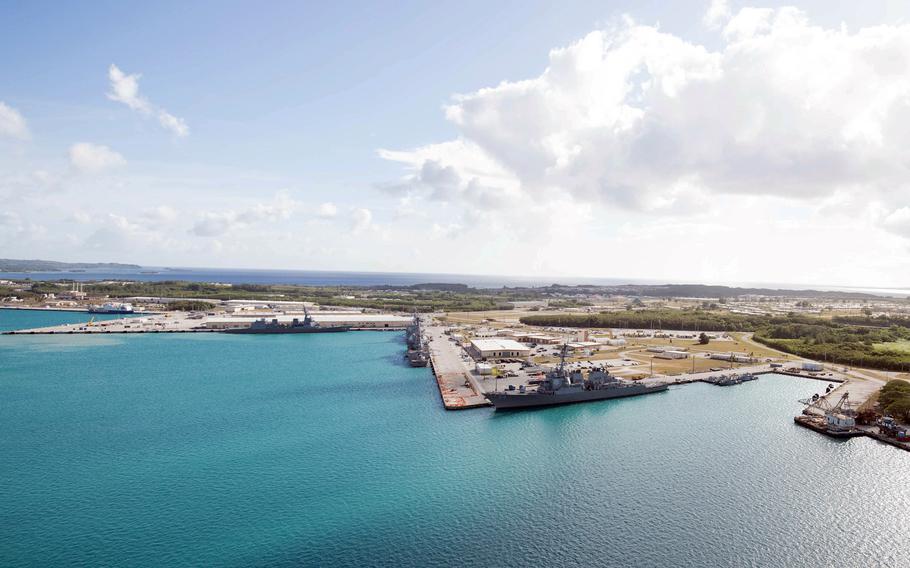
Parts of Naval Base Guam are seen from the air on March 15, 2018. (Stacy Laseter/U.S. Navy)
A missile-defense system proposed for Guam has been narrowed down to 16 sites from 22 following public input and other factors, according to a draft environmental impact statement released Friday.
The Missile Defense Agency laid out its most recent evaluation of the project, the Enhanced Integrated Air and Missile Defense System, in the statement.
The report released Friday identified 22 sites — 21 on Department of Defense property and one on private property.
Those were trimmed to 16 sites after a summer public comment period and a review of environmental concerns, access, operational constraints and cost-effectiveness, among other issues, according to the statement.
The impact statement does not explain why the six other sites were eliminated.
All 16 potential sites are on the island’s three major military installations: eight on Naval Base Guam, six on Andersen Air Force Base and two on Marine Corps Base Camp Blaz.
A site near Camp Blaz and another near Naval Base Guam’s Nimitz Hill have private property within their “Explosives Safety Quantity Distance arc,” meaning public access must be controlled by a restrictive easement or agreement with the landowners, according to the statement.
The project proposes modifying and restricting airspace around the island to minimize conflicts.
The system is designed as a comprehensive network of sites capable of defending “the entirety of Guam against rapidly evolving threats of advanced cruise, ballistic, and hypersonic missile attacks from regional adversaries,” according to the impact statement.
“Guam is a key strategic location for sustaining and maintaining U.S. influence, deterring adversaries, responding to crises, and maintaining a free and open Indo-Pacific,” the document states. “An attack on Guam would be considered a direct attack on the U.S. and would be met with an appropriate response.”
The document will be open for public review and commentary for 75 days concluding Jan. 8.
Three public meetings on the draft environmental impact statement are also scheduled next month on consecutive nights, the first at 4-7 p.m. Nov. 13 at the Hagat Mayor’s Office Community Center, Building 393, Route 2 Hagat.
The second is scheduled 4-7 p.m. Nov. 14 at the Hilton Guam Resort, Micronesian Room 202, Hilton Road, Tumon Bay.
The final public meeting is set for 5-8 p.m. Nov. 15 at the Dededo Senior Center, 319 Iglesia Circle, Dededo.
Following the public comment period, construction at the sites could begin next year and be completed over approximately 10 years, according to the document.
Three to five sites would be built each year, with site preparation taking up to 12 months per site. Peak construction would take place between 2028 and 2030.
The sites would be integrated remotely into the missile-defense system and controlled via a command center at Andersen, according to the document.
The missile agency also plans up to two live-fire missile tests per year for a decade, with tests beginning in the first quarter of fiscal year 2025.
The tests would include a land-based system at Andersen tracking a target launched from an aircraft and then firing an SM-3 interceptor missile from Andersen’s Northwest Field.